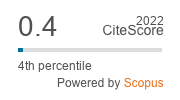Termite sampling methods: A comparative study in four habitats of north Kerala
DOI:
https://doi.org/10.33307/entomon.v48i2.896Abstract
Initially, three termite sampling methods were compared in a coastal area of North Kerala to check the efficiency of the widely followed standardized belt transect protocol (Jones and Eggleton, 2000) with a simplified belt transect protocol and random search method. Of the total 11 species that belong to 4 genera collected during the study, the standardized belt transect protocol recorded only two genera and 5 species in 20 hours of sampling effort, while the simplified protocol with half the effort (10 hours) recorded two genera and 4 species. Random search method with least effort (6h) recorded 4 genera and 11 species that included all the species collected in the earlier methods. There was a marked difference in sampling efficiency; the random sampling method yielded 1.87 species per hour while standardized belt transect protocol and simplified belt transect protocol yielded only 0.25 and 0.4 species per hour respectively. The result of the study was further verified in three more habitats viz. natural forest, coffee plantation and tea plantation which gave similar results. The study indicates that the random search method which covers more area in less time yield more representative termite fauna in all the four habitats tested, than the standardized belt transect protocol which spends more time covering less area.


